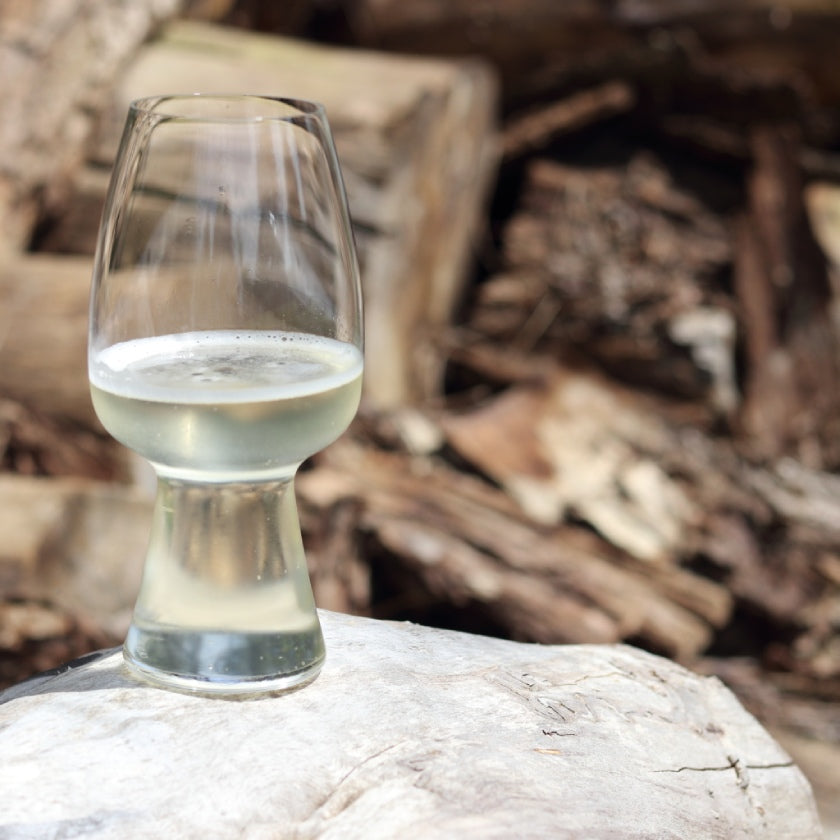Your Cart is Empty
If you’ve ever tasted mead and wondered how hard it would be to make it yourself—good news: DIY mead making is a lot easier than it sounds. With the right ingredients, some simple tools, and a bit of patience, you can brew your own honey wine at home and sip on the golden nectar made by your own hands. In this fourth part of our series The Golden Elixir, we’ll guide you through the process.
A Beginner-Friendly Mead Recipe
Basic Mead Ingredients (3.78L or 1 Gallon Batch):
3 pounds of local honey
1 gallon of filtered water
1 packet of wine yeast (e.g., Lalvin D-47 or EC-1118)
Optional: fruit, spices, or herbs for flavor
Step-by-Step Instructions:
Sanitize Everything:Clean all tools, jars, and fermentation containers thoroughly.
Dissolve the Honey:Mix the honey into warm (not hot) water in a large pot or jug.
Cool It Down:Once fully mixed, let the mixture come to room temperature.
Add the Yeast:Pour your mixture into a fermentation vessel and stir in the wine yeast.
Seal and Ferment:Attach an airlock to your vessel and store in a cool, dark space for 4–6 weeks.
Racking the Mead:After fermentation, siphon into clean bottles, leaving the sediment behind.
Age Before Drinking:Mead tastes best after aging 3 to 6 months, sometimes longer.
Tips and Tools for Home Brewing
To ensure a smooth brewing experience, here are the essential tools you’ll need:
A fermentation jug (1-gallon glass carboy or demijohn)
Airlock and stopper
Siphoning tube
Sanitizer solution (e.g., Star San)
Bottles and corks/caps
Hydrometer (optional, to measure sugar/alcohol)
Helpful Tips:
Use local honey to support nearby beekeepers and boost flavor authenticity.
Keep the fermentation temperature stable—ideally between 65–75°F (18–24°C).
Label your batches with start date and ingredients to track flavor experiments.
Common Mistakes to Avoid (And Fixes)
Brewing your own honey wine is straightforward, but avoid these common errors:
Not sanitizing properly– Leads to bacterial contamination.
Fix: Use a no-rinse sanitizer before every step.
Overheating honey– Destroys delicate flavors and nutrients.
Fix: Use warm—not boiling—water.
Fermenting too hot or too cold– Yeast won’t work well.
Fix: Store mead in a stable, moderate environment.
Adding fruits or spices too early – May result in off flavors.
Fix: Add flavorings after primary fermentation.
Bottling too soon – Can cause pressure buildup or off taste.
Fix: Wait until fermentation is completely done (check for bubbles).
Ignoring the sediment– Results in cloudy mead.
Fix: Rack carefully, avoiding the bottom.
Using poor-quality honey – Flavor will reflect it.
Fix: Use high-quality raw or local honey.
Not using an airlock – Leads to oxidation or contamination.
Fix: Always use a sealed vessel with an airlock.
Skipping the aging– Mead will taste harsh or young.
Fix: Age your mead—patience rewards the palate.
Not keeping notes – Hard to improve or replicate success.
Fix: Maintain a brewing journal.
Final Thoughts
Whether you're a hobbyist, a honey lover, or a fermentation fanatic, brewing your own honey wine at home is deeply satisfying. Not only does it connect you to the centuries-old tradition of mead-making, but it also allows you to explore flavors and techniques at your own pace. With a bit of practice, you may even inspire others to get into DIY mead making and create a buzz around local mead culture.
Stay tuned for the next post in our Golden Elixir series!
Comments will be approved before showing up.
